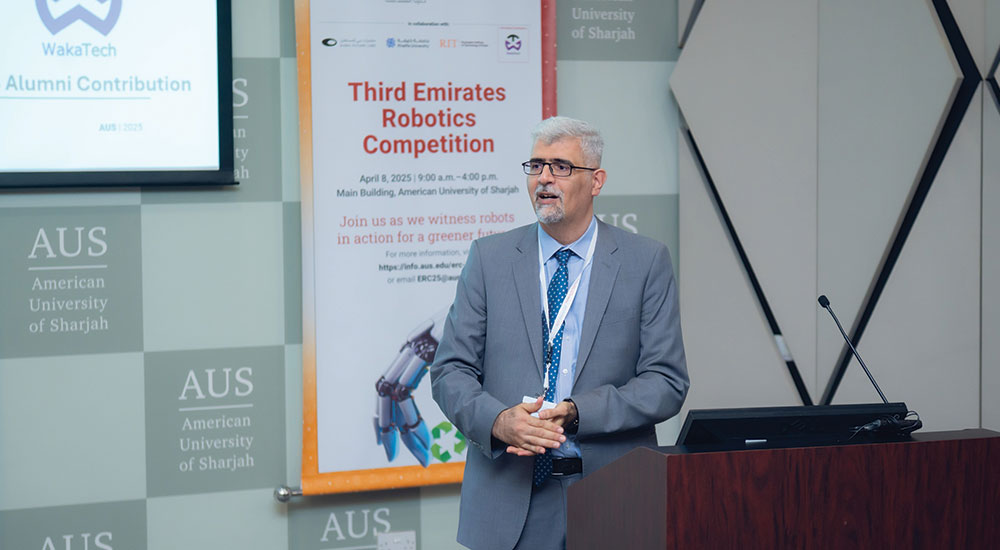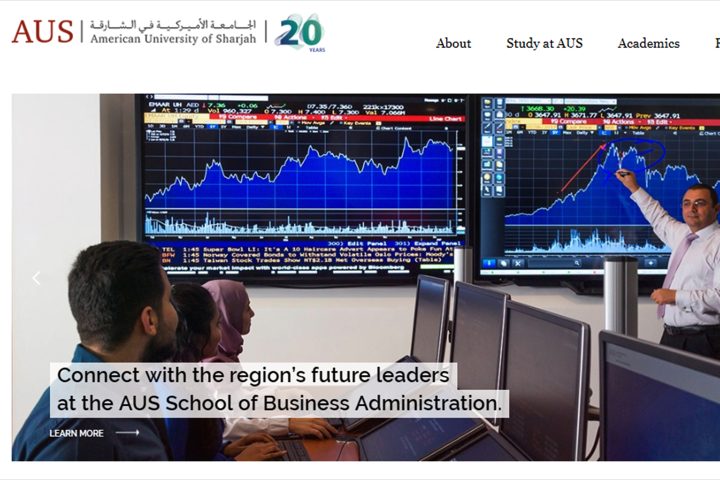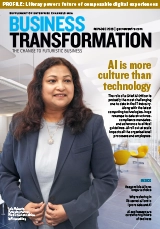When most people think of robots, they picture the cute humanoid machines charming crowds at tech expos or perhaps the Roomba gliding across your living room floor. But the reality of robotics is far more dynamic. Robots are reshaping entire industries today, from construction sites and operating rooms to disaster zones, factories and even our oceans. And their capabilities are expanding by the day, turning sci-fi dreams into practical solutions for some of humanity’s most pressing challenges.
Globally, the robotics industry is booming. According to the International Federation of Robotics, over 4.2 million industrial robots were operating in factories around the world in 2024, while Interactive Analysis reports that growth rates of global industrial robot shipments are predicted to exceed 7 percent by 2026. Robot shipments in the EMEA region specifically are set to grow at a compound annual growth rate of 5.6 percent from 2024 to 2028.
Here in the UAE, this trend is closely aligned with Vision 2030, which places strong emphasis on digital transformation, automation and AI as catalysts for long-term economic resilience and robotics sits at the center of this movement.
This intersection of innovation and impact was on full display at the third Emirates Robotics Competition, which American University of Sharjah (AUS) hosted earlier this month in collaboration with Dubai Future Labs, Khalifa University and RIT Dubai. This year’s event brought together over 100 students from 11 universities across the UAE, with participants rising to the exciting challenge of creating autonomous robots designed to take on three very real and very pressing waste management challenges: trash sorting, ground cleanup and water debris removal.
Robotics and sustainability: A natural partnership
The link between robotics and sustainability might not seem obvious at first. But when you think about the growing urgency around climate change, resource scarcity and waste management, it becomes clear how crucial this technology can be.
Take waste sorting. Across the globe, over 2 billion tons of waste are generated each year, with more than a third of it not managed in an environmentally safe manner, says the World Bank’s What a Waste 2.0 report. One of the biggest barriers to effective recycling is sorting — it’s labor-intensive, inconsistent and expensive. However, if you factor in robotic arms equipped with computer vision and artificial intelligence (AI) that can sort materials more accurately and around the clock, the process can be done exponentially easier, better and faster.
At the Emirates Robotics Competition, we saw student teams tackle this problem head-on, with one challenge involving designing a robotic manipulator to identify and sort recyclable materials. Another required unmanned ground vehicles to autonomously navigate and clean debris from a defined area. A third asked students to design robots that could skim trash from the surface of water, a timely challenge as marine pollution continues to rise.
Technologies such as autonomous ground vehicles or unmanned surface robots are no longer theoretical. WakaTech, a UAE-based robotics startup founded by AUS alumnus Sherif Ismail, exemplifies how robotic solutions are being tested and applied. Recently named one of the UAE’s Top 100 Future Enterprises by the Ministry of Economy, WakaTech has helped modernize waste management systems while also offering robotics education programs to equip the next generation of engineers.
But Sherif’s success is no accident. From an AUS student tinkering with 3D-printed parts to a founder building AI-powered waste management robots, Sherif’s story shows how strong foundational education, combined with curiosity and grit, can lead to meaningful innovation.
This is also exactly why higher education must prioritize interdisciplinary engagement. Robotics industries thrive at the intersection of disciplines, requiring input from mechanical engineering, AI, mechatronics engineering, electrical engineering, environmental science and even ethics, with institutions like AUS working to ensure that its students emerge as well-rounded thinkers capable of reshaping industries through collaboration.
Why robotics matters to Vision 2030
The UAE’s National Innovation Strategy identifies emerging technologies such as robotics, AI and automation as central to building a diversified, knowledge-driven economy by 2030. Robotics is particularly critical in addressing productivity in key industries such as manufacturing, logistics and renewable energy.
The contributions of robotics go well beyond the glamour of tech expos. Consider healthcare, where robots are enabling minimally invasive surgeries with higher precision and shorter recovery times. Farms equipped with automated drones and ground robots are using AI algorithms to optimize crop yields while conserving water and reducing food waste. And recently, thanks to underwater robots, marine biologists have been able to map coral reefs more comprehensively, assisting efforts to combat climate-related damage in our oceans.
Closer to home, projects like the Emirates Mars Mission and initiatives from Dubai Future Foundation have positioned the UAE as a leader in leveraging robotics for both terrestrial and extraterrestrial exploration. Autonomous robotics are no longer just nice-to-haves in advanced economies. They are critical pillars of progress, helping societies scale solutions in areas like sustainability and public health.
Of course, with any conversation about robotics and automation, questions around jobs and displacement naturally arise. And it’s true — certain manual, repetitive tasks will eventually become automated. But history tells us that technology doesn’t just eliminate jobs; it changes them and creates new ones. A McKinsey Global Institute report notes that while up to 30 percent of activities in 60 percent of occupations are technically automatable, new roles in robotics, AI and data science are growing rapidly. In fact, the World Economic Forum’s The Future of Jobs Report 2023 predicted that 69 million new jobs will be created globally by 2027 due to advances in technology even as others are phased out.
As we look ahead, it’s clear that robotics will only grow in significance. Experts from Allied Market Research predict the global robotics market size will double by 2030, reaching USD 149.86 billion, growing at a compound annual growth rate of 27.7 percent from 2021 to 2030. Robotics will be instrumental in shaping a smarter, cleaner and more efficient world. But for this, we need more Sherif Ismails — more inquisitive minds willing to experiment with 3D printers in their dorm rooms, more innovators eager to turn side projects into business ventures that blend profit with purpose.
We need thinkers, doers, designers, coders and visionaries. The Emirates Robotics Competition is just one example of how we empower students through experiential opportunities to identify problems and create meaningful solutions, applying their talent to real-world issues. We will continue to equip our students with the critical thinking and technical expertise they need to succeed in a world where robots rewrite the rules of possibility.






















